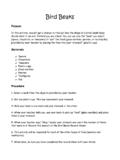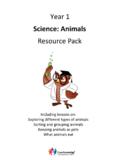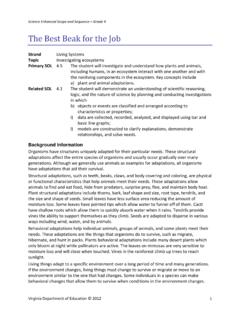Transcription of SS an ar Feeding Programs for Broiler Breeders in …
1 Brazilian Journal of Poultry Science Revista Brasileira de Ci ncia Av cola ISSN 1516-635X Jan - Mar 2017 Feeding Programs for Broiler Breeders in the Start Special Issue Nutrition / 125-130 Phase Author(s). ABSTRACT. Tremarin JI The fast-growing Brazilian aviculture requires studies to improve Sakamoto MII zootechnical performance indexes for Broiler Breeders . The purpose of this study was to assess different Feeding Programs for Broiler Breeders I. Universidade Camilo Castelo Branco UNI- on performance and development of digestive organs. A total of 48,000, CASTELO; Departamento de Produ o Ani- mal. Av. Hil rio da Silva Passos, 950 CEP. 1d-old, Cobb 500 Broiler Breeders were divided into two sheds with 13690-900 - Descalvado, SP - Brasil; Email: 24,000 birds each. The experiment was randomized in block design, considering each shed a block, with 4 treatments and 6 replications per treatment with 2,000 birds in each.
2 Treatments consisted of: Shed 1) T1. = starter feed; T2 = T1 + probiotics; Shed 2) T3 = pre-starter feed; T4 = T3. + probiotics. The productive performance characteristics (bird weight, weight gain, feed intake and feed conversion), the development of digestive organs (gizzard, proventriculus, spleen, bursa of Fabricius and small bowel) as well as the small bowel length were assessed weekly for all experimental groups, in samples of 10 birds per treatment. The best feed conversion and weight gain were observed with pre-starter feed in the first 7 days of age, with or without probiotic. Small bowel, gizzard and proventriculus development at 28 days was better for birds on pre- starter feed compared to those on starter feed alone. It is possible to conclude that Broiler Breeders on pre-starter feed during the first 7 days of age are likely to show better physical and productive performances in the adult phase.
3 Mail Address INTRODUCTION. Corresponding author e-mail address Jandrei Philippi Tremarin The Broiler breeder segment has been going through oscillations Rua Dona Alexandrina, 1550 - Centro - S o due to the combination of a reduction in supply (as a result of problems Carlos, SP - Brasil 13560290 in parent and grandparent Broiler houses, or sanitation issues) and an Email: increase in demand (due to high beef prices, for example). In these cases, eggs or chicks that were likely to be excluded in a more detailed selection, are maintained for growing and finishing. Eggs from new Breeders will provide one-day chicks with more substantial weight variation, which might compromise the performance of the flock Keywords (Burnham et al., 2001). Pre-starter feed, probiotics, digestive tract. The bird s size and weight, 1-d-old are considered key factors for flock uniformity; Broiler Breeders between 30-55 weeks of life produce chicks of 40-45g of live weight, considered ideal for development (Cobb 500).
4 Thus, the post-hatch Feeding of birds is very important for this purpose. Due to limitations in the digestion and absorption of nutrients, several factors influence growth rates in the first week percentage of yolk, feed and water intake, nutritional value, amount of feed and microbiota colonization (Dibner et al., 2008). Submitted: February/2016 High quality feed in the first days of age may contribute to maximum Approved: November/2016 genetic performance. Different Feeding Programs have been assessed 125. Tremarin J, Sakamoto MI Feeding Programs for Broiler Breeders in the Start Phase considering the nutritional requirements at each stage Table 1 Centesimal and calculated composition of of life, so that birds reach maximum zootechnical experimental feeds for Broiler Breeders in starter phase. indexes while reducing costs and improving growth Ingredients Pre-starter Starter (Godoy, 1994).
5 Corn, ground The feed is the main cost in aviculture, reaching Wheat bran Soy bran - 45% up to 70% of costs, therefore, several companies Soy oil are focusing on specific feeds for each stage of life, Calcitic limestone - 38% meeting nutritional requirements and improving bird Monodicalcium phosphate - 20% uniformity and performance. However, several factors Salt affect nutrient utilization, such as the age of the birds, Sodium bicarbonate digestibility of feed ingredients and management Methionine1 88% practices (Lilburn, 1998). Lysine2 54,6% L-threonine3 98% Brake (1999), demonstrated the importance of Vitamin-mineral premix 4 the relationship between the cumulative nutrition Kaolin during the period of breeding and rearing and future Antifungals5 reproductive performance of females. This period Total ranges from accommodation to photostimulation.
6 Calculated composition The aim of this study was to assess different Feeding Metabolizable Energy (kcal/kg) Crude Protein (%) Programs for Broiler Breeders in the starter phase (1. Crude Fiber (%) to 28 day old), considering performance and digestive Calcium (%) organs development. Total phosphorus (%) Digestible lysine (%) MATERIAL AND METHODS Digestible methionine (%) Digestible tryptophan (%) The experiment was performed in the Agua Digestible treonine (%) Vermelha Poultry House, partner of Globoaves, located Digestible methionine+cysteine (%) Sodium (%) near the city of Sao Carlos - SP (Brazil), from August Chlorine (%) to September 2013. The study was approved by the Potassium (%) Ethics Committee in Animal Use from UNICASTELO, DEB (mEq/kg)6 277 195. under protocol number 0001/2014. 1. DL-methionine (Ajinomoto Int. ); 2 Biolys (Evonik Degussa ); 3L-Threonine (Ajino- The fowl run has negative pressure, with black moto Int.)
7 Curtains, in length and in width and a 4. Vitamin-mineral premix composition (per kg) Pre-starter/starter: vitamin A. 11250000 Ul/kg, Vitamin D3 3750000 Ul/kg, Vitamin E 37500 mg/kg, Vitamin K3. commuting water cooler. 3125 mg/kg, Vitamin B1 3125 mg/kg, Vitamin B2 10000 mg/kg, Vitamin B6 5000 mg/. The total of forty-eight thousand female, 1day old, kg, Vitamin B12 25000 mcg/kg, Niacin 50000 mg/kg, Pantothenic Acid 18750 mg/. kg, Folic Acid 2000 mg/kg, Biotin 150 mg/kg, Colin chloride 60% 1250 g/kg, Copper Cobb Broiler Breeders were divided into two sheds, 10000 mg/kg, Iron 50000 mg/kg, Manganese 120000 mg/kg, Zinc 100000 mg/kg, with twenty-four birds each. The experiment was Iodine 2000 mg/kg, Selenium 300 mg/kg; 5 EBD 100 mg/kg 125 mg/kg; 6 Electrolyte randomized in block design, considering each shed Balance of Diet, according to Mogin (1981).
8 A block, with four treatments and six replications per treatment with 2,000 birds each (eight birds/m2 of Fermentum, Lactobacillus Helveticus and inulin (Vetan- creating density). The treatments consisted of: Shed 1) co ), one sachet of 50ml to birds. T1 = starter feed (1-7 days); T2 = T1 + probiotic (in The lighting program was defined as 24 hours of continuous water on day 1); Shed 2) T3 = pre-starter light on the first day of lodging, with 2 hours/day feed (1-7 days); T4 = T3 + probiotic (in continuous water reductions until 10 hours/day of light was reached. on day 1). After 7 days, all birds were fed the same Maximum and minimum temperatures were recorded control diet (T1) without probiotic. Experimental diets daily with a mercury thermometer, with averages of were corn and soymeal-based, meeting the nutritional 32 C and 20 C, respectively.
9 Requirements of each Feeding stage (Manual COBB- On day 3, beaks were trimmed and the birds were 500) Table 1. vaccinated via eye drop against infectious bronchitis, Floramax (live lactobacillus) was the probiotics of Newcastle, Gumboro, and coccidiosis; at 21 days choice. It includes Lactobacillus Bulgaricus, Lactoba- the birds were given a Gumboro boster via drinking cillus Casei, Lactobacillus Cellobiosus, Lactobacillus water. 126. Tremarin J, Sakamoto MI Feeding Programs for Broiler Breeders in the Start Phase Zootechnical performance indexes (body weight, For Broiler Breeders , controlled feed is crucial for flock feed consumption, feed conversion and flock viability) uniformity, the modern strains of high performance were assessed weekly throughout the experimental have large capacity on muscle growth, and even when period. The feed was offered ad libitum in the first mature birds can still convert the excess of amino acids week.
10 From the second week onwards, the feed and proteins in muscles, impairing egg production was controlled when each bird received the required (Jensen, 1986). amount according to lineage and age. The amounts In the whole assessment period (1-28 days, Table were adjusted weekly according to the Lineage Manual. 3), higher daily weight gain can be observed for birds At 7, 14, 21 and 28 days, 10 birds per treatment on pre-starter feed when compared to those receiving were euthanized and necropsied, and the following starter feed alone, with direct influence on feed variables were assessed: bird weight, weight of conversion. proventriculus, gizzard, cloacal bursa, small bowel and Table 4 shows the relative weights of the digestive gut length. The organ s weights were given relative to tract organs at 1, 7, 14, 21 and 28 days for the different the bird s weight.














